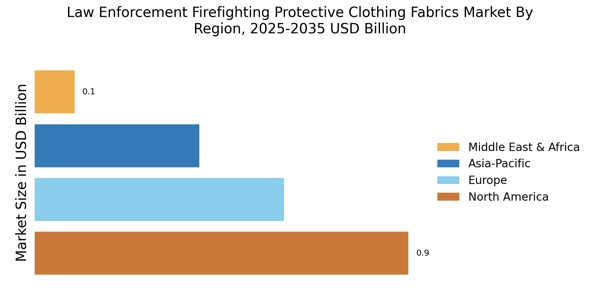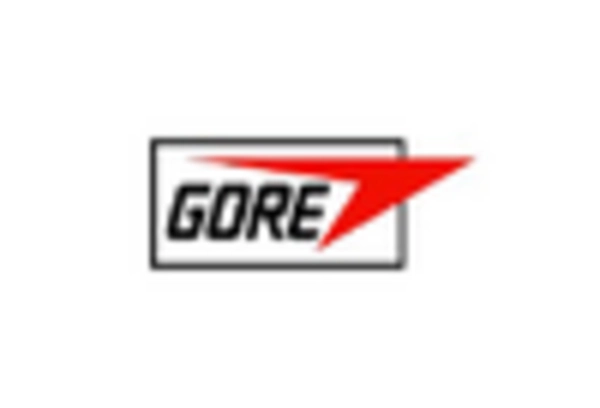Advancements in Material Technology
The Law Enforcement Firefighting Protective Clothing Fabrics Market is experiencing a notable transformation due to advancements in material technology. Innovative fabrics, such as aramid fibers and flame-resistant materials, are being developed to enhance the protective capabilities of clothing. These materials not only provide superior thermal protection but also improve comfort and mobility for the wearer. The integration of moisture-wicking and breathable fabrics is becoming increasingly prevalent, allowing for better temperature regulation during intense firefighting operations. As a result, the demand for high-performance protective clothing is expected to rise, with the market projected to reach a valuation of approximately USD 2 billion by 2026. This growth is indicative of the industry's commitment to ensuring the safety and effectiveness of law enforcement personnel in hazardous environments.
Sustainability in Fabric Production
Sustainability is emerging as a pivotal driver in the Law Enforcement Firefighting Protective Clothing Fabrics Market. As environmental concerns gain prominence, manufacturers are increasingly focusing on sustainable practices in fabric production. This includes the use of recycled materials and eco-friendly manufacturing processes that minimize waste and reduce carbon footprints. The shift towards sustainability not only appeals to environmentally conscious consumers but also aligns with the broader goals of law enforcement agencies to promote responsible practices. Reports indicate that the market for sustainable protective clothing is expected to grow at a compound annual growth rate of 5% over the next five years. This trend suggests that sustainability will play a crucial role in shaping the future of protective clothing fabrics, influencing both consumer preferences and regulatory frameworks.
Rising Awareness of Occupational Hazards
The rising awareness of occupational hazards is a significant driver in the Law Enforcement Firefighting Protective Clothing Fabrics Market. As incidents of fire-related injuries and fatalities among law enforcement personnel are highlighted, there is an increasing emphasis on the need for effective protective clothing. This heightened awareness is prompting agencies to invest in high-quality fabrics that offer superior protection against heat, flames, and other hazards. Furthermore, training programs are being implemented to educate personnel about the importance of proper gear, which in turn drives demand for advanced protective clothing. Market analysts suggest that this trend could lead to a 10% increase in the adoption of specialized protective fabrics over the next few years, as agencies prioritize the safety and well-being of their teams.
Regulatory Compliance and Safety Standards
The Law Enforcement Firefighting Protective Clothing Fabrics Market is significantly influenced by stringent regulatory compliance and safety standards. Various organizations, including the National Fire Protection Association (NFPA), have established guidelines that dictate the minimum performance requirements for protective clothing. Compliance with these standards is not only essential for the safety of law enforcement personnel but also serves as a critical factor in the procurement process. As agencies prioritize the safety of their teams, the demand for compliant fabrics is likely to increase. This trend is further supported by the growing awareness of the risks associated with inadequate protective gear. Consequently, manufacturers are compelled to innovate and produce fabrics that meet or exceed these standards, thereby driving market growth and ensuring the well-being of those in the line of duty.
Technological Integration in Protective Gear
The integration of technology into protective gear is becoming a defining characteristic of the Law Enforcement Firefighting Protective Clothing Fabrics Market. Innovations such as smart textiles, which incorporate sensors and communication devices, are being developed to enhance situational awareness and safety for law enforcement personnel. These advanced fabrics can monitor vital signs, detect hazardous conditions, and provide real-time data to command centers. As the demand for high-tech protective clothing increases, manufacturers are investing in research and development to create fabrics that not only protect but also empower users with critical information. This technological evolution is expected to drive market growth, with projections indicating a potential increase in market size by 15% over the next decade as agencies seek to equip their personnel with the latest advancements.


















Leave a Comment